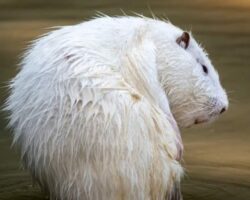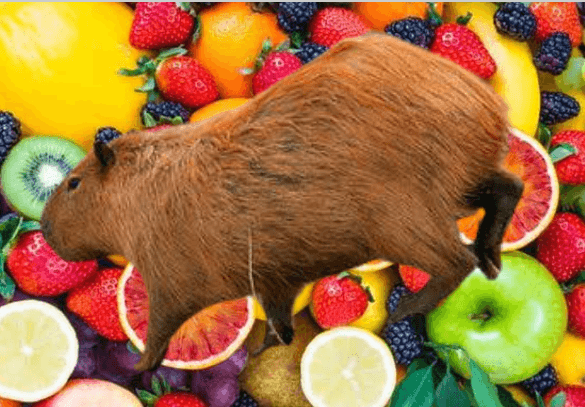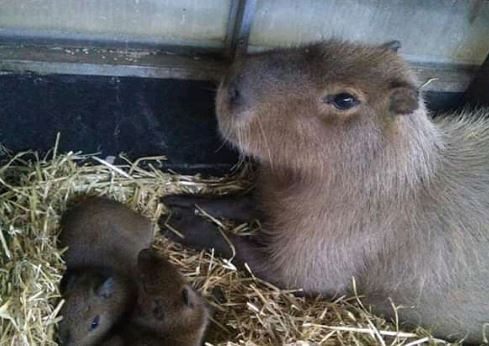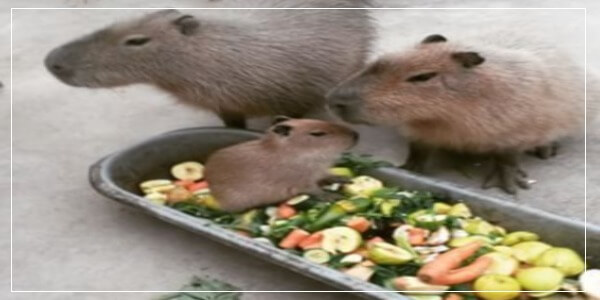Capybaras are known for their herbivorous nature, relying solely on plant matter for sustenance. However, the specifics of their culinary preferences and the various food options are truly captivating. From lush grasses to mouthwatering aquatic plants, capybaras have a rich menu, each bite contributing to their well-being and contentment.
We will explore the natural diet of capybaras, examining the types of plants and vegetation they consume in their native habitats. Additionally, we will uncover their fondness for grasses and their delight in grazing on these verdant offerings. Furthermore, we will discover their affinity for aquatic plants as they gracefully navigate the waterways for delectable bites.
What Are Capybaras Favorites Food?
- Grasses: Capybaras have a strong affinity for grasses, which constitute a significant portion of their diet. They enjoy grazing on various types of grass, including Bermuda grass, Timothy grass, and even native grasses found in their natural habitats. The fibrous nature of grasses helps maintain their dental health and provides essential nutrients.
- Aquatic Plants: Being semi-aquatic creatures, capybaras have easy access to various aquatic plants, which they relish. Water hyacinth, water lettuce, and duckweed are among their favorites. These aquatic plants offer a refreshing change in their diet and provide hydration due to their high water content.
- Leafy Greens: Capybaras show a keen preference for leafy greens, which contribute to their overall health. They enjoy munching on lettuce, kale, spinach, and Swiss chard. Leafy greens are packed with essential vitamins, minerals, and dietary fiber, making them an excellent addition to their diet.
- Vegetables: Besides grasses and leafy greens, capybaras delight in various vegetables. Carrots, sweet potatoes, zucchini, and cucumbers are some examples of vegetables that capybaras find particularly appealing. These vegetables provide essential nutrients and add diversity to their diet.
- Fruits: Capybaras have a sweet tooth for various fruits. Watermelon, apples, bananas, and berries are among their favorites. Fruits offer natural sugars, vitamins, and antioxidants, providing capybaras with a delicious and nutritious treat. However, moderation is key, as fruits should be given as occasional treats due to their higher sugar content.
- Supplementary Foods: While capybaras primarily thrive on plant-based foods, they can also consume supplementary items to enhance their diet. Timothy hay, oat hay, and alfalfa hay are good fiber sources that aid digestion. Grains, such as rolled oats or whole grains, can be given in small amounts as occasional treats. Additionally, herbs like mint or parsley can provide aromatic enrichment to their diet.
How Do Capybaras Survive in the Amazon Rainforest?
Capybara Meat And Its Culinary Uses – [Every You Should Know]
What are Some Specific Types of Grasses That Capybaras Prefer?
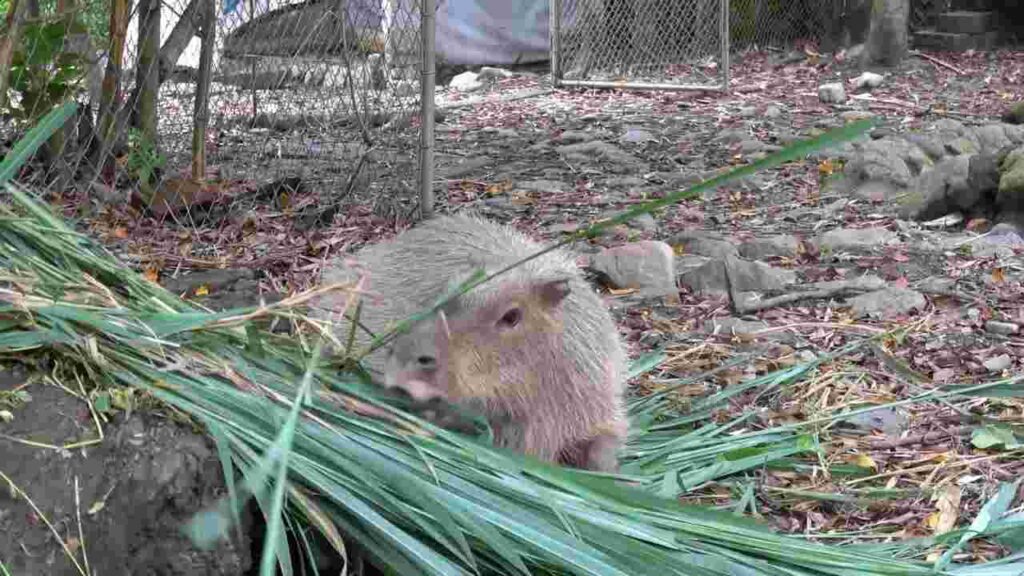
Capybaras, as herbivores, have a particular affinity for various types of grasses, which form a significant part of their diet. While their preferences may vary depending on availability and location, capybaras tend to favor several specific types of grasses.
One such grass is the Paspalum genus, which includes species like Paspalum vaginatum and Paspalum dilatatum. These grasses are commonly found in the natural habitats of capybaras, such as wetlands, marshes, and riverbanks. Capybaras often graze on these grasses due to their palatability and nutritional value.
Another grass that capybaras commonly consume is the Panicum genus. Panicum maximum, or Guinea grass or elephant grass, is preferred. It is a tall grass with broad leaves, providing ample sustenance to capybaras. Its abundance in open areas and pastures makes it readily available for their grazing needs.
Capybaras also show a fondness for certain aquatic grasses. Water hyacinth (Eichhornia crassipes) and water lettuce (Pistia stratiotes) are two examples of floating aquatic plants that capybaras find appealing. These grasses grow abundantly in aquatic environments, and capybaras often dive into water bodies to feast on them.
While these are some specific types of grasses that capybaras prefer, it’s important to note that their diet can vary based on factors like region, season, and habitat conditions. Capybaras are adaptable in their feeding habits and can consume a range of grasses to meet their nutritional requirements.
Are There Any Specific Aquatic Plants That Capybaras Enjoy?
Yes, capybaras do enjoy specific types of aquatic plants. These semi-aquatic creatures have a natural affinity for water and can often be found grazing near rivers, lakes, and marshes. Aquatic plants comprise a significant part of their diet, providing nutrition and hydration.
One specific aquatic plant that capybaras particularly enjoy is the water hyacinth (Eichhornia crassipes). This floating plant with vibrant purple flowers is a favorite among capybaras due to its succulent stems and leaves. Water hyacinth is rich in nutrients and provides a good source of hydration for these semi-aquatic rodents.
Another aquatic plant that capybaras often consume is water lettuce (Pistia stratiotes). Like water hyacinth, lettuce floats on the water’s surface and has thick, velvety leaves. Capybaras find it appealing and feed on its nutritious foliage.
Capybaras also prefer other aquatic vegetation, such as duckweed (Lemna spp.), cattails (Typha spp.), and various types of water grasses. These plants offer sustenance and fulfill their need for moisture intake.
How Can Capybaras Be Helpful to Humans? [Answered]
Why Do Capybaras Poop in Water – [Answered]
Signs of Pregnancy In Capybaras – [7 Key Signs]
Can Capybaras Consume Human Food as Treats?
Capybaras, being herbivores, have specific dietary requirements that primarily consist of plant matter. While they can consume some human foods as treats, exercising caution and moderation is important. Capybaras have sensitive digestive systems; certain human foods can be harmful or unhealthy.
Ideally, capybaras’ treats should align with their natural diet. Safe options include small portions of fruits and vegetables suitable for their consumption. These may include slices of apples, pears, carrots, or leafy greens like lettuce and spinach. It’s important to remember that treats should not replace their regular grasses, vegetation, and hay diet.
Foods that should be strictly avoided as treats for capybaras include sugary or processed human snacks, such as chocolate, chips, or candies. These foods can lead to digestive issues, obesity, and other health problems. Furthermore, when offering human treats, it is crucial to ensure they are free from harmful additives or seasonings. Spices, salt, and other seasonings commonly used in human food can harm capybaras’ health.
Can Capybara Eat Carrots?
Yes, capybaras can eat carrots. Carrots are a safe and nutritious vegetable that can be included in a capybara’s diet. Carrots are rich in vitamins, minerals, and fiber, which can provide beneficial nutrients to these herbivorous animals. However, it’s important to remember that carrots should be offered in moderation as part of a balanced diet. While capybaras can enjoy carrots as a treat, their main diet should primarily consist of grasses, aquatic plants, and other vegetables.
It’s essential to ensure that most of their food intake comes from their natural dietary preferences to meet their nutritional requirements. If feeding carrots or any other human food, it’s recommended to offer them in small portions and avoid any seasonings, additives, or excessive sugar content.
Can Capybaras Eat Potatoes?
Feeding capybaras a diet high in starchy or sugary foods, such as potatoes, can potentially lead to digestive issues and imbalances in their nutritional intake.
It is important to prioritize feeding capybaras a diet that mimics their natural feeding habits, consisting of grasses, aquatic plants, vegetables, and fruits.
Do Capybaras Like Milk?
Capybaras have a specialized digestive system adapted for breaking down fibrous plant material, and their bodies are not designed to digest milk or other dairy products efficiently. Giving capybaras milk or dairy products can lead to digestive issues and may cause discomfort or harm to their health.
It is essential to provide capybaras with a balanced diet consisting of suitable and beneficial foods for their herbivorous nature rather than introducing milk, which is unnecessary and potentially detrimental to their well-being.
Conclusion
Understanding the favorite foods of capybaras is crucial for their proper care and well-being. Capybaras, as herbivores, have a natural diet that primarily consists of grasses, aquatic plants, vegetables, and fruits. Grasses and aquatic plants hold a special place in their hearts, while various vegetables and fruits provide them with the necessary nutrients. It is important to note that capybaras should not be fed human food or dairy products like milk, as these can cause digestive issues and harm their health.
By providing capybaras with a balanced diet that reflects their natural feeding habits, we can ensure they thrive in both wild and captive environments. Offering suitable supplementary foods like hay, grains, and herbs in moderation can also contribute to their nutritional needs. Responsible feeding practices and focusing on their dietary requirements will promote these fascinating creatures’ overall health and happiness.

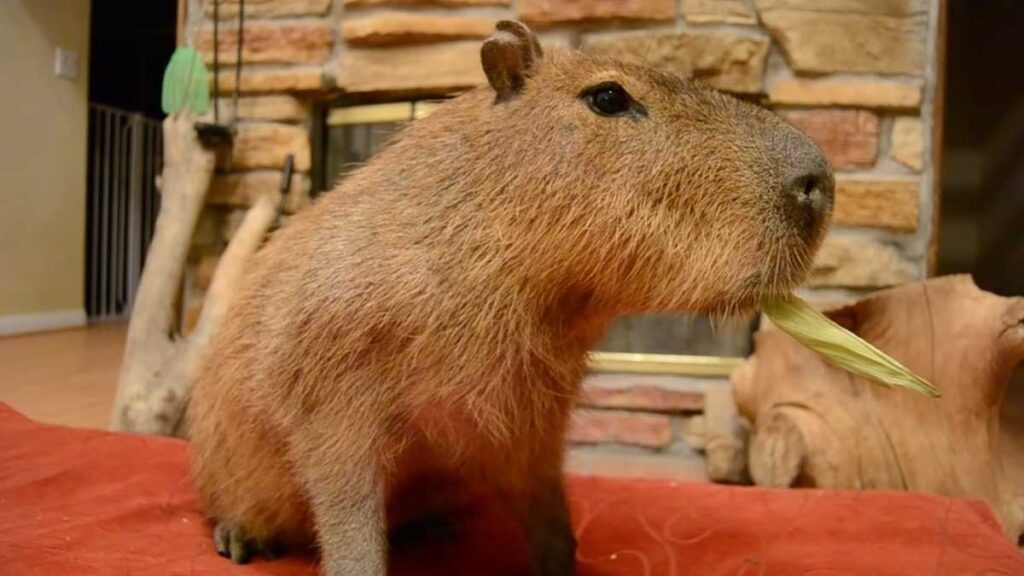
![Why Do Capybaras Not Have Tails? - [Answered] Why Do Capybaras Not Have Tails](https://capybaratips.com/wp-content/uploads/2023/03/Capy-Tail-250x200.webp)

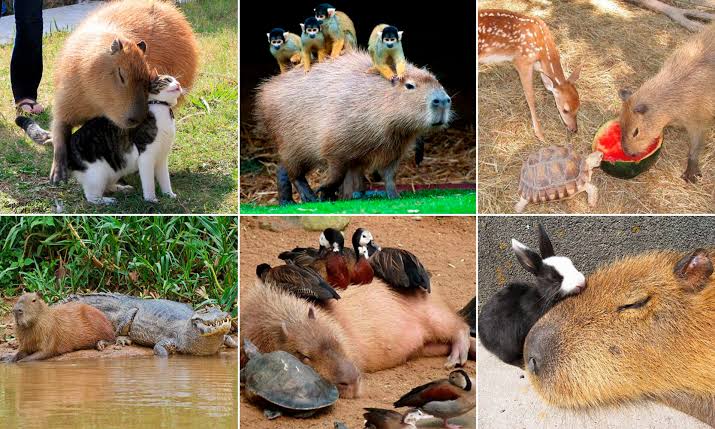
![How Long Do Capybaras Live? - [Answered] How Long Do Capybaras Live](https://capybaratips.com/wp-content/uploads/2023/03/Capybara-Pix-250x200.webp)
